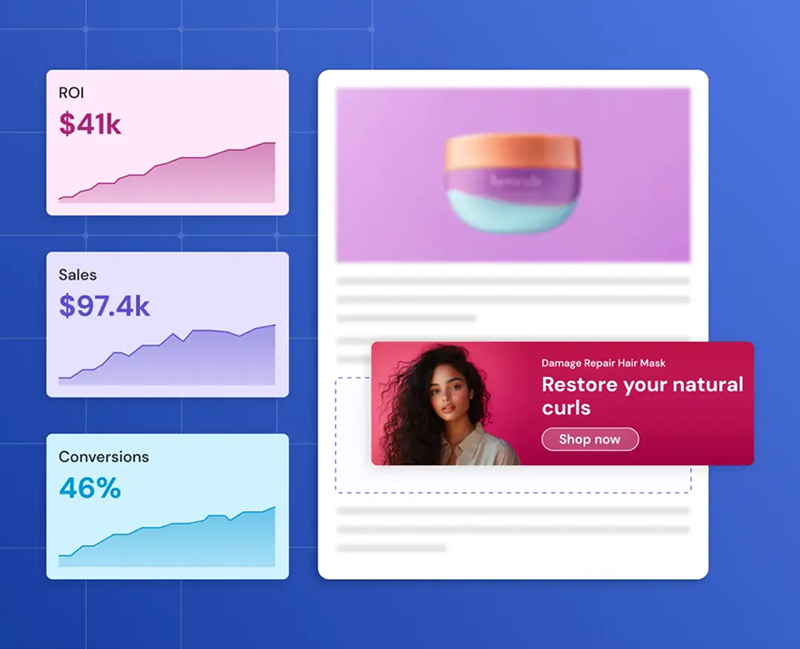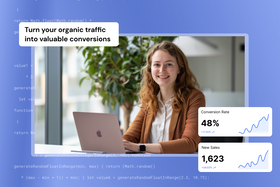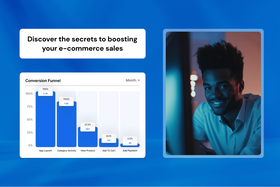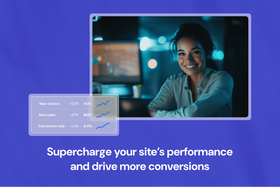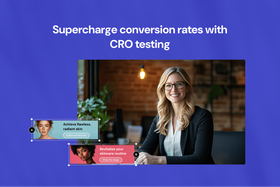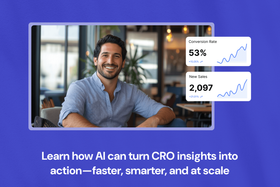SEO customer acquisition: How to get more customers through search
What if your website could attract ready-to-buy customers while you sleep—without spending a dime on ads? Here's how.
Updated May 9, 2025
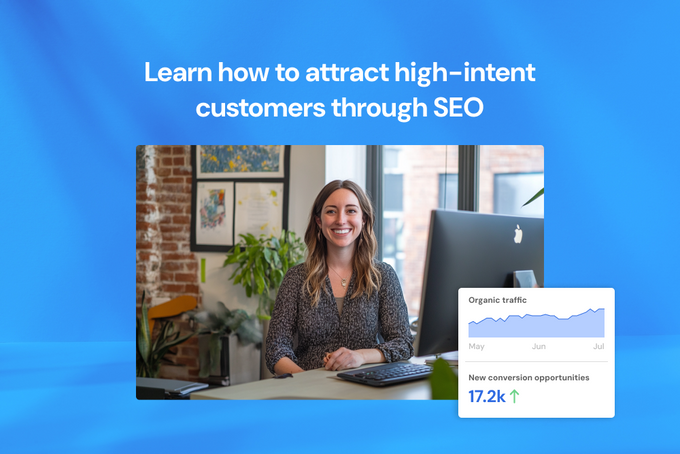
Most businesses treat SEO like a traffic magnet, forgetting it's worthless if it doesn't convert users into paying customers. Worse, competitors are hijacking your dream clients right from Google's top spots, leaving you buried on page two (or worse).
Every misaligned keyword, slow-loading page, or vague call-to-action (CTA) is a leak in your revenue bucket. You're not just losing clicks—you're handing over leads, sales, and long-term loyalty. And the longer you delay, the more expensive and cutthroat the race for visibility becomes.
Below, we explore SEO customer acquisition. You'll learn how to turn Google into your #1 sales rep.
Key takeaways
- Focus on converting high-intent searchers into customers, not just ranking for generic keywords.
- Align keywords with the buyer journey (awareness, consideration, decision) to attract qualified leads.
- Speed, mobile UX, and clear CTAs turn clicks into sales; dominate niche and local searches to capture leads.
- Organic traffic costs less than paid ads in the long term, converts better than social traffic, and builds trust.
The role of SEO in customer acquisition
SEO is an effective tool for customer acquisition and slashing customer acquisition costs (CAC)—the total you spend to land a paying customer. It syncs your online presence with what users are searching for, boosting lead quality and cutting reliance on pricey paid ads.
It helps you zero in on high-intent keywords across the user journey, like:
- "How to improve lead generation" for awareness
- "CRM vs. email marketing tools" for consideration
- "Buy CRM software" for the decision stage
You can use SEO to pull in leads primed to convert, making your funnel ultra-efficient. Ranking high on Google, which drives website traffic via organic search, gives you steady, no-cost exposure to users hunting for solutions.
On the CAC front, SEO's a budget-saver: organic traffic, unlike PPC, has no per-click costs after initial investments in content or technical tweaks.
» Learn how to reduce customer acquisition cost.
Plus, high-intent organic visitors convert way better than scattershot social media traffic, and a single optimized post can rake in traffic for years, spreading costs thin for killer ROI. Top rankings also boost trust and credibility, which boosts SEO conversions.
READ MORE: Should you invest in SEO or PPC?
Benefits of SEO for customer acquisition
In a nutshell, SEO helps customer acquisition by aligning your online presence with user intent, driving high-quality leads, and delivering long-term value—all while keeping costs in check. Here's how it works:
- Attract high-intent leads: Targeting queries like "best budget CRM software" pulls in users ready to buy, converting better than passive social media audiences.
- Cost-effective over time: According to Search Engine Journal, organic search delivers the highest ROI of any marketing channel. Once your SEO is in place, you get consistent gains in traffic and conversions, helping lower CAC.
- Outperform competitors: Dominating high-value or local keywords (e.g., "plumber near me") steals market share and captures nearby buyers.
- Adapt to algorithm updates: Prioritizing UX, mobile-friendliness, and E-E-A-T (Experience, Expertise, Authoritativeness, Trustworthiness) future-proofs your efforts.
- Target the entire buyer journey: From awareness ("how to fix [problem]") to consideration ("Tool A vs. Tool B") to decision ("buy [product]"), SEO generates and nurtures leads seamlessly.
- Deliver long-term ROI: Evergreen content, like an "Ultimate Guide to Email Marketing," drives traffic for years with minimal upkeep, boosting profit margins.
» Explore our proven techniques to improve SEO ROI.
10 key SEO strategies for customer acquisition
1. Target high-intent keywords
Targeting high-intent keywords involves focusing on search terms that indicate a user is ready to take action, such as "buy," "best," or "near me." For example, a business selling running shoes might prioritize keywords like "best trail running shoes 2026" over generic terms like "running shoes."
To apply this strategy, you can try tools like Ahrefs or SEMrush to identify keywords with commercial intent, then create landing pages or blog content tailored to these terms.
Also, track metrics like organic traffic growth and conversion rates to gauge success. Avoid targeting broad, low-intent keywords (e.g., "what is trail running") that attract casual browsers instead of buyers.
» Learn how to build a winning content marketing strategy.
2. Map keywords to the SEO funnel
Mapping keywords to the SEO funnel ensures content aligns with user intent at each stage of their journey.
For example, a TOFU (top of funnel) keyword like "how to start a podcast" could lead to a beginner's guide, while a BOFU (bottom of funnel) term like "podcast editing software pricing" might link to a product comparison page.
You can use GA4 to segment content by funnel stage and prioritize keywords that drive conversions. Don't force users into irrelevant funnel stages—avoid linking a TOFU blog post directly to a sales page without nurturing them with mid-funnel content.
3. Create high-quality, intent-driven content
High-quality content addresses user intent with depth and relevance. For example, a SaaS company targeting "CRM for small businesses" could publish a detailed guide comparing features, pricing, and case studies.
Tools like Clearscope or SurferSEO help optimize content for keyword relevance and structure. To assess engagement, focus on SEO KPIs like average time on page and scroll depth. Avoid keyword stuffing or publishing thin content that fails to answer queries comprehensively.
» Discover how to create content that converts.
4. Use relevant CTAs in your content pages
Relevant CTAs guide users toward the next logical step. For example, a blog post about "email marketing strategies" could end with a CTA like "Download our free email campaign template."
Apply this by contextually embedding conversion-focused CTAs—e.g., a "Schedule a demo" or "Start now" button on a product features page—and testing placements with A/B tools. You should also track CTA click-through rates and conversions to help refine your messaging.
5. Optimize user experience
Optimizing user experience involves improving site speed, mobile responsiveness, and navigation. For example, compressing images with ShortPixel or fixing broken links via Screaming Frog can boost page speed scores on Google PageSpeed Insights.
To identify friction points, prioritize metrics like mobile usability score and bounce rate. Avoid cluttered layouts or slow-loading pages, which deter users from exploring further.
» Find opportunities to improve UX by creating a user journey map.
6. A/B test landing pages
A/B testing compares page variations to identify the elements that convert best. For example, you might test two versions of a landing page headline: "Get 50% Off Today" vs. "Start Your Free Trial" to see which gets more conversions.
You can try CRO tools like Entail CRO, VWO, or Google Optimize to run experiments and track metrics like conversion rate, click-through rates, and session duration. Be careful not to test too many elements at once, as this can muddy your results.
» Learn how SEO A/B testing can help you get more leads
7. Build quality backlinks
Earning backlinks from authoritative sites boosts domain authority and traffic. For example, you could publish a data-driven report on "marketing trends in 2026" and pitch it to industry blogs using HARO.
Track your progress with Moz Link Explorer and prioritize metrics like referral traffic and domain authority (DA). Avoid spammy tactics like buying links or guest posting on irrelevant sites.
» Find out how to build topical authority and get more backlinks.
8. Create lead magnets
Lead magnets offer value (e.g., ebooks, templates) in exchange for contact information. For example, a cybersecurity company could offer a "Free VPN Setup Checklist" via a pop-up triggered on their homepage after 60 seconds.
You can use Leadpages to design landing pages and track email sign-up rates. Don't ask for excessive user data upfront—stick to essentials like name and email.
READ MORE: 7 SEO lead generation techniques to attract and convert visitors
9. Implement schema markup
Schema markup enhances SERP visibility with rich snippets. For example, adding an FAQ schema to a "How to Use ChatGPT" guide could display answers directly in search results.
You should validate markup with Google's Structured Data Testing Tool and monitor organic CTR via Search Console. Avoid using irrelevant schema types that don't match your content.
10. Optimize internal linking
Internal linking guides users to related, high-value pages. For example, link a blog post about "SEO Tools" to a product page for your SEO software.
You can use Screaming Frog to audit existing links and prioritize pages with high conversion potential. Avoid overlinking or using generic anchor text like "click here."
Start acquiring customers through SEO
SEO isn't about vanity metrics or ranking for its own sake. It's a strategic engine to attract ready-to-buy customers who search for exactly what you offer. The result? A stream of leads who want to pay you, not just browse.
But knowledge without action is just noise. Audit your strategy today. Fix leaks in your funnel. Prioritize profit-driven SEO over empty traffic spikes. The longer you wait, the more revenue slips to your competitors.
READ MORE: Paid vs. organic customer acquisition
